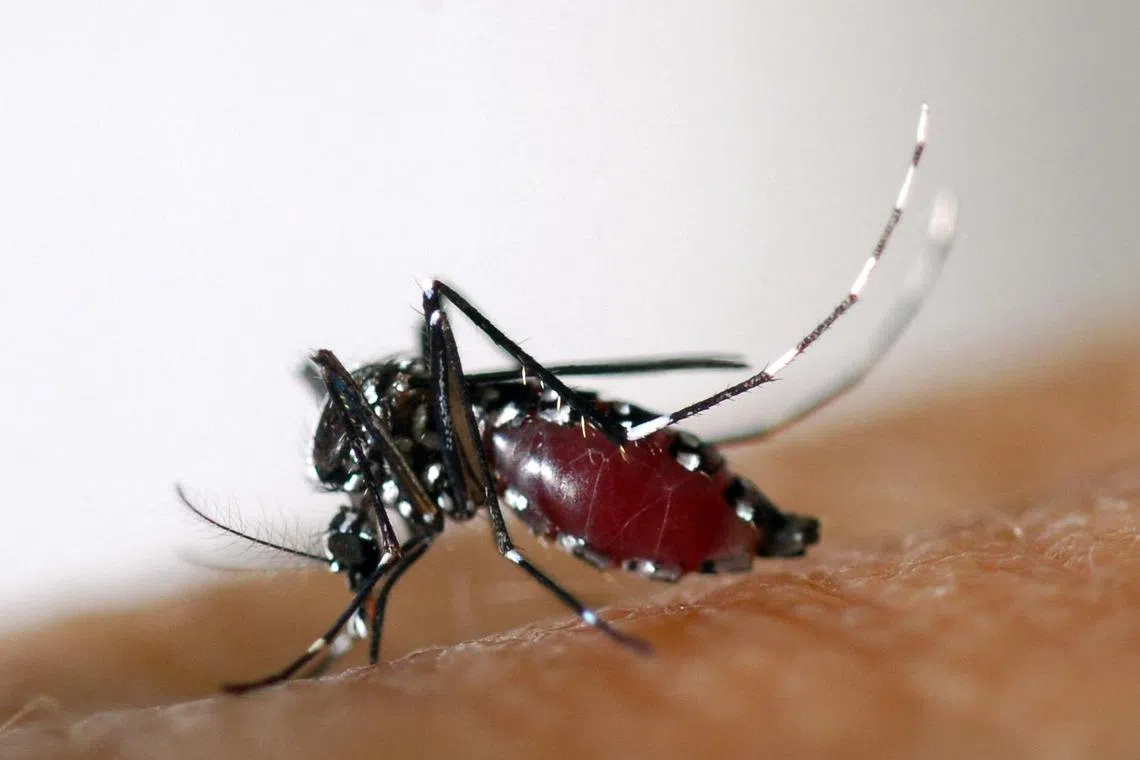Japanese firm develops solution to eradicate mosquitoes without insecticides
Sign up now: Get ST's newsletters delivered to your inbox

The use of water-based surfactant solutions employs a completely different mechanism than conventional insecticides, Kao noted.
PHOTO: AFP
Follow topic:
SINGAPORE – Amid mosquitoes’ growing resistance to insecticides,
Japanese cosmetics and chemicals company Kao said that it has developed a solution that sticks to the wings and body of a mosquito, preventing it from flying. A mosquito’s body is coated in a hydrophobic substance similar to wax, which allows it to repel water from the surface of its wings and body and lay its eggs in water, said Kao on June 20.
Based on the company’s earlier study in 2020 that a mosquito cannot land on human skin when its legs are coated in silicone oil, Kao focused its attention on surfactants – chemical compounds which can reduce the surface tension between two liquids – on the hypothesis that the flight behaviour of the insect could be altered by wetting its body and wings.
An aqueous surfactant solution that rapidly coats the wings and body of a mosquito can prevent it from flying and knock it down, Kao found. Additionally, the solution can block spiracles – small openings on the abdomen of the insect that allows it to suck in air – and prevent the mosquito from taking in oxygen.
The use of water-based surfactant solutions employs a completely different mechanism from conventional insecticides, Kao said.
“Mosquitoes depend on the ability to repel water from their body to survive, so it is expected that mosquitoes will not readily gain resistance to the physical mechanism of wetting their body that effectively causes their death,” it said.
This comes after a study found that most Aedes aegypti mosquitoes, which carry diseases such as dengue and Zika, collected in Cambodia and Vietnam had developed a mutation that made them “super-resistant” to a commonly used insecticide, according to scientific journal Science Advances in December 2022.
Kao’s solution was jointly developed by its Personal Health Care Products Research Laboratory and the Laboratory for Circuit Mechanisms of Sensory Perception, under Japan’s Institute of Physical and Chemical Research.
Its findings were published in the peer-reviewed journal Scientific Reports in February, and were presented during the Asia Dengue Summit held in June in Bangkok, Thailand.
But the effectiveness of aerosols in controlling Aedes aegypti populations has been debated, as the spray needs to make direct contact with the mosquito, said infectious diseases expert Ooi Eng Eong.
“Aedes aegypti has adapted to the urban environment by being very surreptitious. It is thus not easy to spot this mosquito in mid-flight and kill it with a spray,” said the professor with the emerging infectious diseases programme at Duke-NUS Medical School.
Instead, the proven method in controlling their numbers is to reduce the number of water-retaining receptacles that they breed in, he added.
Kao said it plans to put the technology into practical use to protect people from mosquito-borne diseases.
When asked when it might be commercially available, a Kao spokesman told The Straits Times that the company did not yet have concrete plans on deploying the product, but aimed to start with areas affected by dengue fever, such as Singapore.

